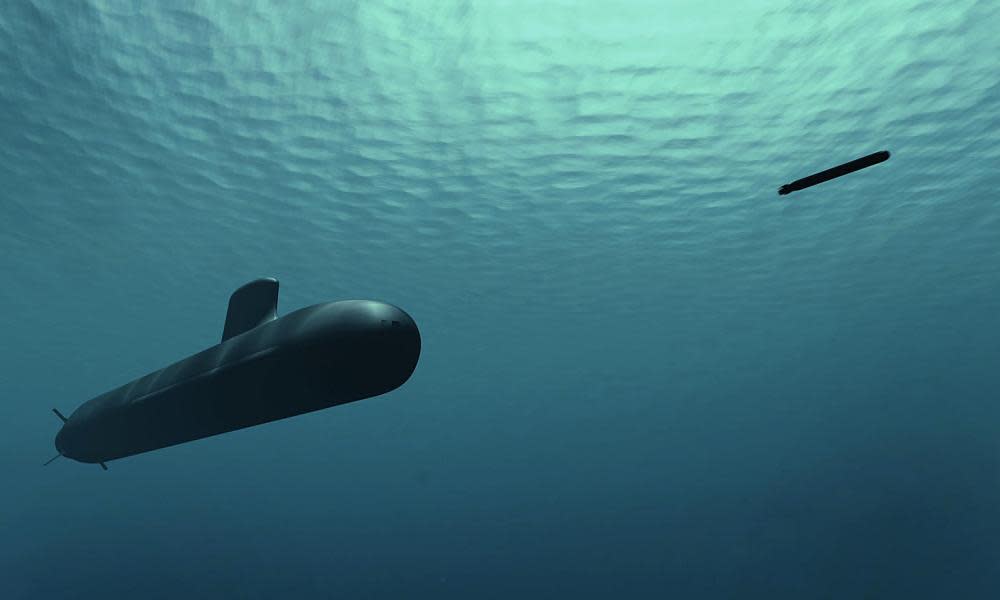‘Right decision’ to scrap French submarines but South Australian jobs will be lost

About 350 Naval Group Australia jobs will be lost with the decision to scrap Australia’s current $90bn submarine project and replace it with a plan to build nuclear submarines in Adelaide.
Despite anxiety in South Australia over potential job losses, and uncertainty about the future of some supply chain companies dedicated to the existing French project, observers said the move was necessary.
Australia must be careful not to “jump out of the frying pan and into the fire”, South Australian senator Rex Patrick said.
“I’m pleased the government has left the Shortfin Barracuda [French submarine] program … it was running late already, it wasn’t meeting expectations in terms of industry engagement and there are questions about whether it would give us a regionally superior submarine.
“But it’s a huge jump to … building a nuclear submarine. We need to make sure the very capable people in the workforce are not lost to other industries.”
Patrick will push for an inquiry into the process. He said it’s still unknown what sort of submarine will be chosen, where the nuclear work will be done, and how people will feel about nuclear reactors inside submarines on Australian territory.
“It’s the right decision to walk away, but you cannot ignore the billions of dollars spent,” he said.
The SA Greens are already set to fight the “dangerous deal” that they say “puts a target on the state’s back”. Senator Sarah Hanson-Young said it was a “serious escalation in our military policy and spending” and called for the government to create “clean, green” jobs.
The nuclear option was taken off the table initially because Australia does not have a domestic nuclear capability. However, if the nuclear work is all carried out in the United States or the United Kingdom, experts say Australia could do the rest here – assuming any legislative and political hurdles are overcome.
Brent Clark, the chief executive of the Australian Industry and Defence Network (AIDN), was the head of Naval Group Australia/DCNS at the time the main contractual architecture was built.
He said AIDN’s sympathies were with the current Naval Group Australia employees. “They’ll be hurting at this time,” he said, adding that there were also many Australian companies that had either secured contracts or made investments based on the existing deal to build diesel-electric submarines in Australia.
“The government needs to be mindful that those companies have every opportunity to get work,” he said.
“This is a momentous occasion for Australia … we have no doubt the Australian industry is capable of stepping up.”
Clark said it would be “common practice” for the United States or the United Kingdom to build and maintain the nuclear part of the submarine, leaving Australia with all the non-nuclear work.
The contract with France was written with several built-in escape clauses. Although the details remain secret, the Australian National Audit Office said the agreement “contains rights, remedies and incentives, including protections, ‘control gates’ in the form of mandated system reviews based on defined exit and entry criteria, and establishes contractual off-ramps”.
The ABC reported in 2019 that the confidential overarching contract – the strategic partnering agreement – would see Australia pay about $400m if it pulled out after the design was completed but before a submarine was completed.
Australian Strategic Policy Institute senior defence analyst Andrew Davies said it was usually really hard to “put a stake through the heart of a defence project”, because of the costs and commitment already sunk into them. He said that amount of money was relatively low. “It may be a rare example of Australia having negotiated effectively,” he said.
Related: What are nuclear-powered submarines, anyway? A guide to Australia’s looming military addition
“With the off ramps, given the trouble the project is in, and the fact it’s going to deliver too little too late, it’s a remarkable bargain.”
Davies said that the existing fleet of 12 Collins Class submarines were already going to have to have their lives extended to avoid a capability gap that would leave Australia under-resourced. The new plan could run to a similar timeline to the old one, delivering submarines through the 2030s and into the 2040s, he said.
Naval Group has expressed its “major disappointment” at the program’s scrapping, a move that could see about 350 Australian-based staff lose their jobs.
The Australian Shipbuilding Federation of Unions national convener Glenn Thompson said thousands of workers’ jobs had been thrown into doubt and called for more detail on the plan.
SA premier Steven Marshall welcomed the “fabulous new nuclear-powered fleet”. He said the announcement, along with a decision to keep deep maintenance work on the Collins Class in Adelaide (instead of moving it to Western Australia), cemented SA as “the maritime capital of the nation”. Prime minister Scott Morrison has promised other naval shipbuilding work to Western Australia.

 Yahoo News
Yahoo News 
